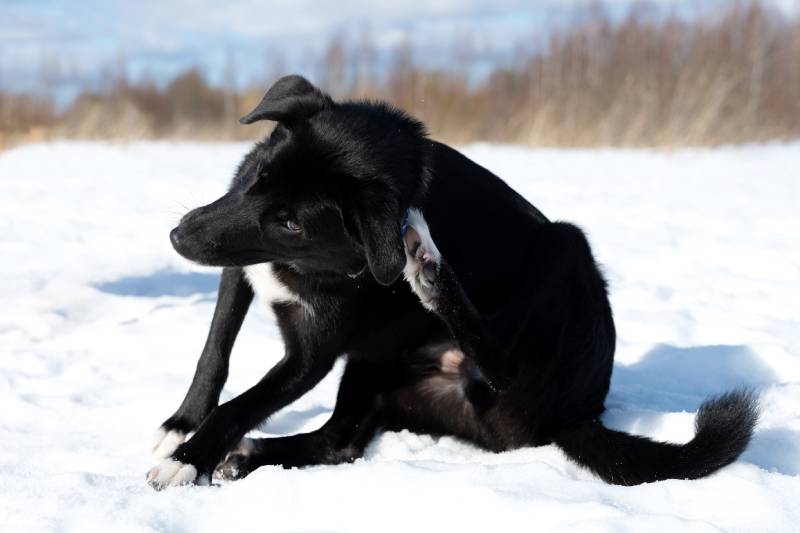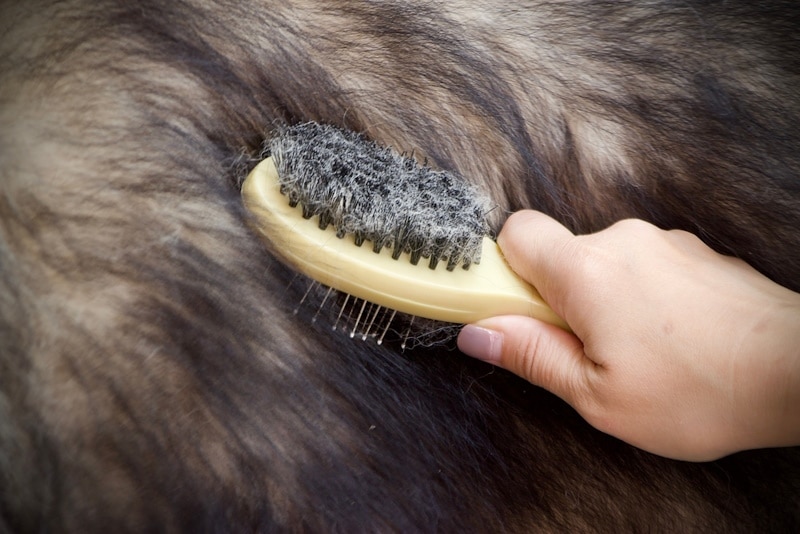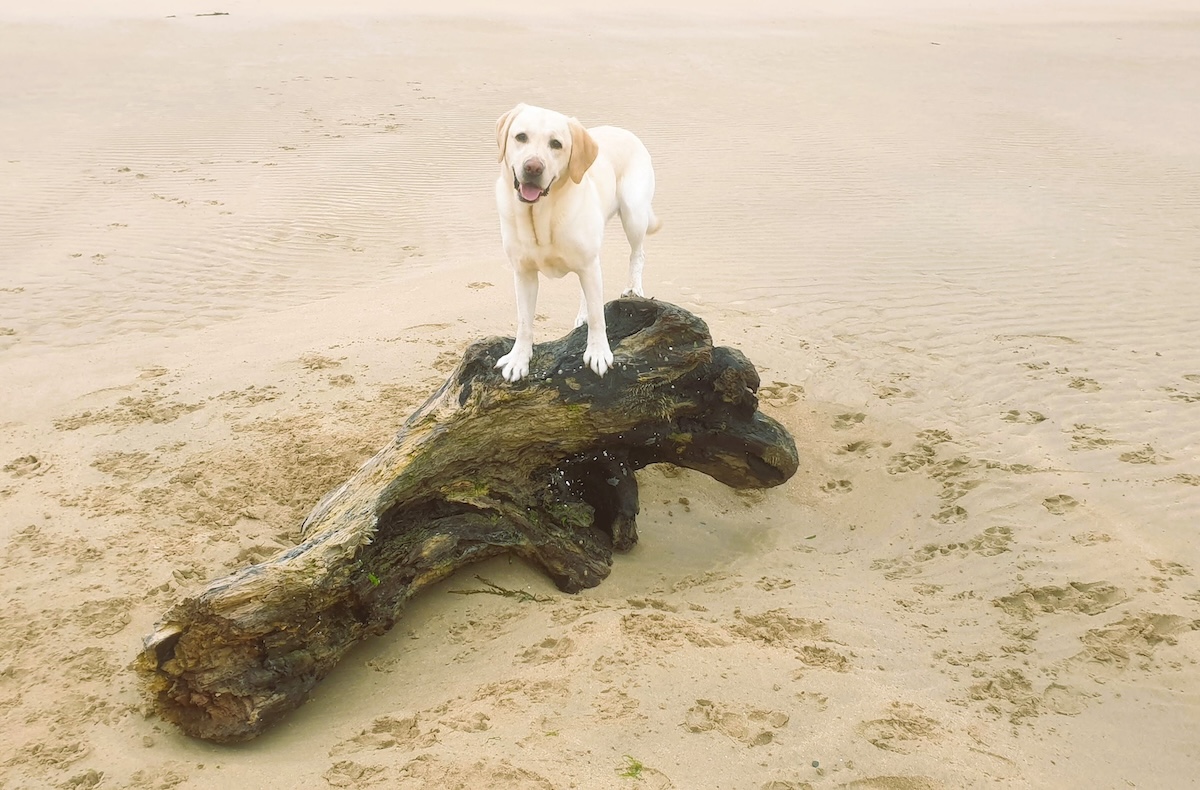Click to Skip Ahead
According to Nationwide Pet Insurance, skin allergies are the top reason people take their dogs to the vet. One of the leading causes is flea allergy dermatitis, triggered by the saliva of this external parasite when they feed. You may think your pup is safe from this pest if they stay in their yard instead of walking in the neighborhood. The fact remains that your pooch can get them whether or not they go outside.
Yes, dogs can pick up fleas on walks, but they can just as easily get infested by playing in the backyard. The same flea that plagues canines also attacks bobcats, coyotes, opossums, and raccoons. The chances are at least one of these mammals visits your yard, even if you don’t see them.

The Conditions Fleas Like Best
There is a large assumption that fleas are not a threat in the winter months. While it’s true that fleas prefer temperatures between 65–80℉, they can also get a lift inside your home on your dog or from anyone going inside the house. These pests may be dormant outside, but they’re alive and active wherever it’s warm. Some may dismiss the risks of a few bugs. However, one single flea can lay up to 50 eggs a day.
If you’re wondering how many fleas is an infestation, it doesn’t take much or long for it to become a significant problem. Once they start multiplying, it can be challenging to get rid of them. In fact, adult fleas on your pet only constitute around 5% of a flea infestation, with the other 95% being eggs, larvae and pupae living in the environment. This means that even if you only see a few adult fleas, it’s likely to only represent the tip of the iceberg of an infestation.

When Fleas Become a Problem
Of course, the best treatment is prevention. You should keep your dog on a flea preventative year-round. Remember that wildlife carries the same flea species that could infect your pet and so your dog can pick up fleas from the outdoors, including in your yard. If your pooch is already infested, treatment will involve both the animal and your home.
You likely keep the ambient temperature of your home within the range fleas prefer. That means they’re still active and reproducing. Ideally, you should treat your pet at the same time as your home. Flea bombs and household flea sprays are an effective way to eliminate pests. The hitch is that you’ll need to repeat both processes to resolve the issue altogether. Nature has protected the insect’s eggs, making this step necessary.
You should also wash your pup’s bedding in hot water at the same time as the treatments. The same precaution applies to any places your dog frequently uses, such as the sofa or your bed. We suggest maintaining your yard to reduce damp, shady areas where fleas thrive and using outdoor flea treatments if needed ( always carefully read and follow the instructions). It can take up to several months before you get a heavy flea infestation under control. If it sounds like a hassle, it’s because it is. Thus, prevention is definitely your best bet at keeping them at bay.
Frequent Asked Questions
What Else Can I Do to Prevent My Dog From Getting Fleas?
Early detection is another weapon in your toolbox. You should brush or comb your pup’s coat frequently. Keep an eye out for the white-colored eggs or dark flea dirt (flea feces) on your pet’s skin or fur. Constant scratching is another obvious sign of an infestation. Acting quickly is imperative, as fleas can carry many diseases and parasites including tapeworms and Bartonella henselae, the bacteria that causes cat scratch disease. Make sure you treat other pets (mammals) in your household with regular veterinary prescribed flea control.

Can Garlic Prevent Fleas?
Garlic and other members of the onion family are highly toxic to dogs and cats. Also, there is no solid scientific evidence to support their use even if they weren’t toxic to your pup.
What Can I Do About My Backyard?
You should mow your lawn regularly and rake out the yard waste. Long grass and moist conditions create the perfect breeding ground for fleas and other pests. You should also avoid walking your dog through brush or areas with heavy leaf cover to prevent your pet from gaining any unwanted hitchhikers.

Final Thoughts
Nearly three-quarters of pet owners buy flea and tick products. You’re not alone in your concern about your dog becoming infected during their daily walk. However, your pet is just as likely to get fleas from your backyard. Therefore, the best solution is the year-round application of a flea-and-tick preventive. It will protect your pet and your family from any future infestations.
Featured Image Credit: schubbel, Shutterstock











